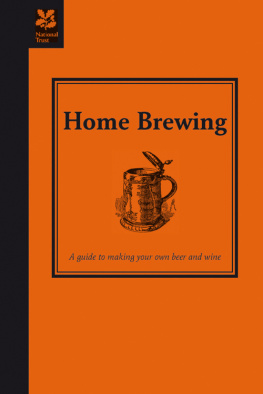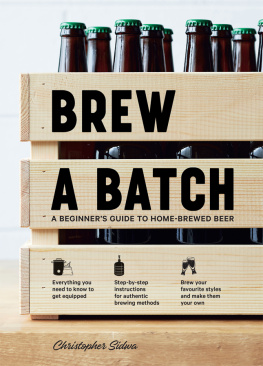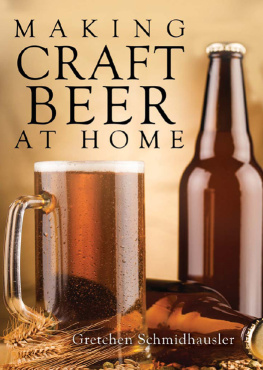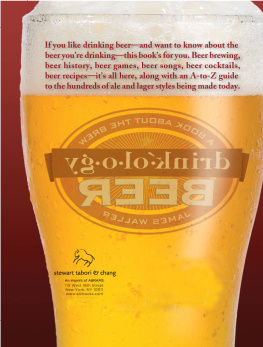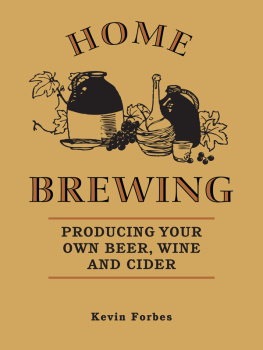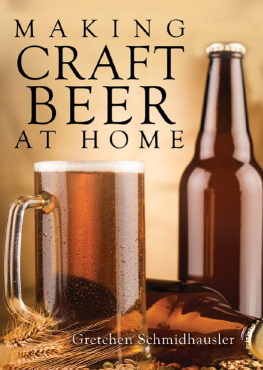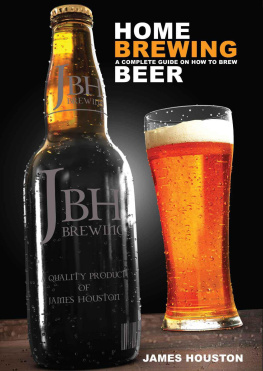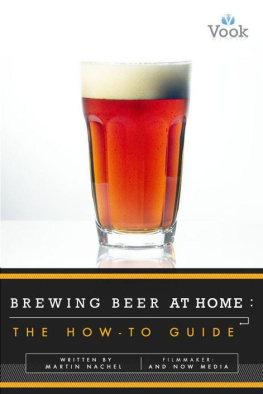Wort is t he unfermented or fermented solution of malt used after the fermented mixture becomes beer
Hops come from the Humulus plant , which bears female flowers in the shape of cones, which is what are used in the brewing process
The time period from 1920-33 when the 18 th Amendment restricted any alcoholic beverages to be manufactured, transported or sold anywhere in the United States
IMPORTANT: This ebook contains encrypted data aimed at a recognition in case of piracy. All rights are reserved according to law. No part of this book may be reproduced by any means without the written permission of author and publisher. It is expressly forbidden to pass on to others this book, either in hard copy or electronic format, either for money or for free. The concepts and techniques described in this book are the result of years of study and specializations, so the same outcome is not guaranteed either in personal or professional growth. The reader assumes full responsibility for his choices and he is aware of the risks associated with any form of exercise. The author and publisher are not responsible for the misuse or for any prohibited purpose of the content of this book. The book has merely educational and informative purposes and does not replace any type of medical , psychological or professional treatment. If you suspect or are aware of any health problems or any physical or psychological problem you will need to rely on an appropriate medical treatment. The book does not replace the advice and help of a professional in the field, for any specialized discipline it is advisable to rely on an expert professional who follows the question in the first person.
The History of Home Brewing
The process of brewing beer has been around as an art for a millennium. It's only been recently, however, that practitioners have tried to turn it into an applied science.
The oldest American brewery is D.G. Yuengling & Son in Pottsville, Pennsylvania, which has been brewing beer since 1829. Although we think of home brewing and brewing of beer in general as starting in the 1800s, beer has actually been around for much longer than that. Home brewing and beer have always played a large and important part in our lives. In fact, it is believed that Noah provided for beer to be part of the provisions on the Ark!
AlE
What we know today as beer was originally known as ale. Ale was made by fermenting the extract from grains and cereals. Certain herbs such as ground ivy and stinging nettle were used for flavoring and bittering. At the start of the 15 th Century, people began to notice a difference between beer and ale, as beer was the hopped beverage that was made in Belgium. Beer and ale were the drink of the common people throughout the country before coffee, tea and cocoa were introduced. Monasteries were the location of some of the first commercial breweries in England.
Many families, specifically farmers, brewed their own ale (or beer), although there were professional brewers in town that made it as well. In fact, home brewing was a household industry in those days. Most of these professional brewers consisted of widows, because this was one of the few career choices open to widows. Workers at estates often received ale as wages. When taverns came into existence, they would each brew their own ale. They'd put a fresh bush outside of the place so those passing by would know there was fresh brew available.
The 1600's
In 1683, William Penn started a business of brewing beer in Pennsburg, to earn money as well as encourage people to drink beer instead of hard liquor, which seemed to cause bad tempers for many.
The early methods of brewing beer consisted of heating and soaking barley to encourage germination. The result of this mixture, called malt, was then mixed with water and brought to a boil until it formed the wort were then added to the boiling substance, to give it a distinctive aroma and pleasant yet bitter taste. Hops are used as a stability agent and for flavoring in beer. The liquid was then strained, at which time yeast was added. It was then allowed to ferment for a couple days.
English vs. other beer
One major difference between brewing methods then and today is the timing process. Prior to the twentieth century, a rule of thumb or old time recipe determined the timing, as opposed to the modern equipment and technology used today. There was a difference between English beer and the early American beer.
When the English beer was made, they fermented it with yeast that floated on the top, whereas Germans used yeast that would stay on the bottom of the wort. When the Germans removed the yeast, they allowed the beer to age at low temperatures for weeks. This resulted in milder beer with a better aroma, making it a more popular style of beer. This beer took over the beer industry, so the floating yeast style of beer making was left for the making of ale. This was when the real distinction between beer and ale was made.
The 1800s
The late 1800s brought about many changes in the home brewing of beer. It became more difficult for the small businessperson or individual to compete with the larger breweries using up-to-date equipment. The addition of the railroad helped breweries distribute their beer around the nation. However, this made it a requirement that beer be able to withstand sitting for days, changes in temperature and getting shook up a lot of the time in transit. Chemical additives had to be removed, and pasteurization was necessary to prevent bacterial growth.
The 1900's and prohibition
Laws came into effect to make sure these requirements were followed. The early 1900s brought about the great Prohibition, a time when it was forbidden to sell any alcoholic beverages. This hurt the beer and liquor business drastically, but it did survive. After Prohibition was done, it took many years to get the people back in the habit of drinking beer rather than hard liquor, however.
Home brewing was made legal in 1976 and many small town craft brewers began making and marketing their own brands of beer, for sale to other businesses and areas. The sales of craft beer grew so high that they became competitive to some of the large brewers, who then began developing and marketing their own brands of beer.
Home brew is not near as popular as it once was, with the many different laws that have enacted through the years. Many have switched from the home brewing of beer to try their hands at wine and other liquors. The interesting thing about home brewing, however, is that with each beverage you make, you'll want to make more of some other variety just to experiment.
Reasons For Home Brewing
People choose to home brew for different reasons. Some enjoy the art of making their own beer for personal consumption, while others home brew for the competitive spirit in amateur brewing contests. Others home brew to distribute it at social gatherings in their home, and some just do it for the hobby. Regardless of the reason, home brewing is still very popular and a lot of fun once you learn the art.
While the term "home brewing" may refer to the brewing of beer, alcoholic beverages and even some soft drinks, it's most often used when discussing the making of beer.
Beer and money
In the time of the Babylonians, beer was valued so highly that it was used as wages to be given to workers in lieu of money. Beer also played an important role to the Egyptians, as it was brewed for royalty, medical purposes and to be used in burials as a provision for the trip to the hereafter.


